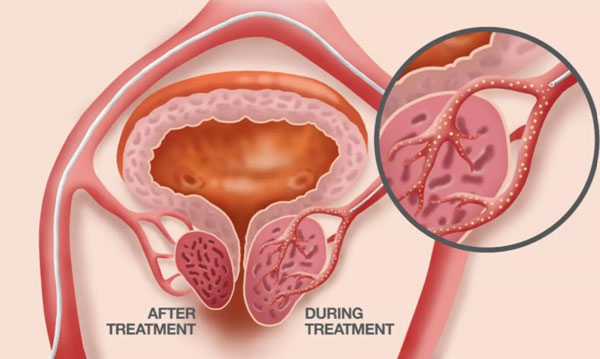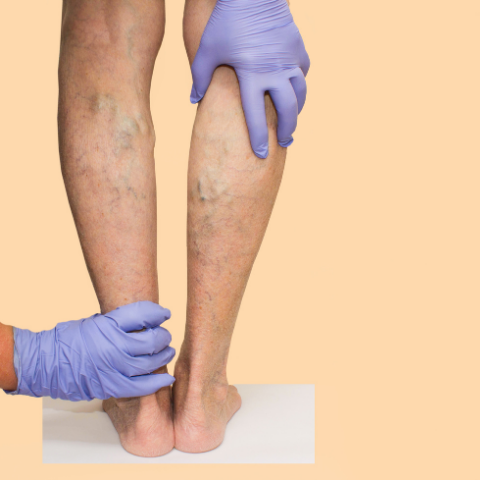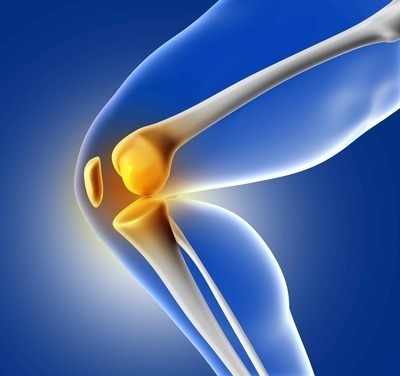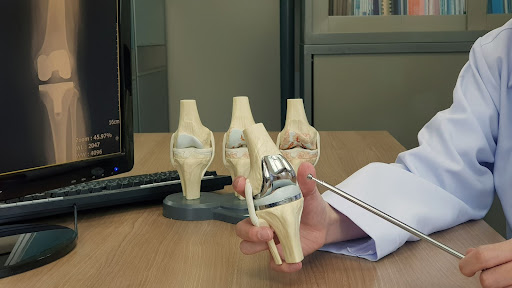Benign Prostatic Hyperplasia / Urology
Everything You Need to Know About Prostate Artery Embolization

by admin
6th September 2023
7 minutes read
An increasing number of men worldwide are experiencing a condition known as Benign Prostatic Hyperplasia (BPH), or enlarged prostate. This condition typically leads to troublesome urinary symptoms and can significantly impact quality of life. One promising procedure for BPH treatment is Prostate Artery Embolization (PAE), a minimally invasive procedure that offers a new alternative to traditional enlarged prostate surgery.
Prostate Gland and BPH
Before diving into the nuances of Prostate Artery Embolization, it’s essential to understand the fundamentals of the prostate gland and BPH. The prostate gland is a small, walnut-shaped gland that plays a vital role in male reproductive system. It is located just below the bladder and produces seminal fluid, which nourishes and transports sperm.
Benign Prostatic Hyperplasia (BPH), or enlarged prostate, is a common condition in men, especially as they age. It involves the noncancerous enlargement of the prostate gland. This enlarged prostate gland can press against the urethra (the tube carrying urine from the bladder to the penis) and cause a variety of bothersome prostate symptoms.
BPH symptoms can include frequent urination, especially at night, difficulty starting and stopping urination, weak or interrupted urine flow, and urinary retention. In some cases, BPH can lead to complications such as urinary tract infections and kidney damage.
Treatment Options for an Enlarged Prostate
Here’s an overview of some of the treatment options:
1. Watchful Waiting:
If your symptoms are mild and not bothering you too much, your doctor may suggest watchful waiting. This involves no specific treatment but regular check-ups to monitor the condition. Lifestyle changes such as reducing fluid intake before bedtime, avoiding caffeine and alcohol, and regular exercise can help manage mild symptoms
2. Medications:
For moderate symptoms, medication is often the first line of treatment. These include:
- Alpha blockers: These drugs relax the muscles around the prostate and bladder neck, easing urination. Examples include tamsulosin and alfuzosin.
- 5-alpha reductase inhibitors: These reduce the size of the prostate by blocking the hormonal changes that cause prostate growth. They include finasteride and dutasteride.
- Combination therapy: In some cases, an alpha-blocker and a 5-alpha reductase inhibitor are used together for greater effect.
- Phosphodiesterase-5 inhibitors: These are the same medications used for erectile dysfunction, such as Cialis (tadalafil). They can also relax the muscles in the prostate and the bladder.
3. Minimally Invasive Procedures:
If medication doesn’t provide enough relief or if you have a very large prostate, your doctor may recommend a minimally invasive or surgical procedure.
- Transurethral microwave thermotherapy (TUMT): This procedure uses microwave energy to destroy excess prostate tissue.
- Transurethral needle ablation (TUNA): Radio waves are used to destroy excess prostate tissue.
- Prostatic urethral lift (Urolift): Small implants are used to hold the prostate lobes apart, relieving pressure on the urethra.
- Prostate artery embolization (PAE): A relatively new technique where small particles are injected into the arteries supplying the prostate, effectively blocking the blood supply and causing the prostate to shrink.
4. Surgical Procedures:
For severe symptoms or if you have complications like bladder stones or recurrent urinary tract infections, surgery may be necessary.
- Transurethral resection of the prostate (TURP): This is the most common surgery for an enlarged prostate and involves removing a portion of the prostate through the urethra.
- Prostatectomy: In rare cases, the entire prostate may be removed, usually in the case of a very large prostate or if you have prostate cancer.
Choosing the best treatment option depends on your symptoms, the size of your prostate, your overall health, and how much you’re bothered by your symptoms. It’s essential to discuss these factors and the potential benefits and risks of each treatment with your doctor to make an informed decision about your care.
Understanding Prostate Artery Embolization
Prostate Artery Embolization is a less invasive procedure that involves blocking the blood supply to the enlarged prostate, causing it to shrink and thereby alleviating BPH symptoms. This procedure is performed by a radiologist and does not require any incisions.
During PAE, a small catheter is inserted into the femoral artery in the groin or the radial artery in the wrist. Using X-ray guidance, the catheter is navigated to the prostate arteries on both sides of the prostate. Once the catheter is positioned correctly, tiny particles are injected into the prostate arteries, blocking the blood flow to the enlarged prostate gland.
This blockage deprives the prostate tissue of oxygen and nutrients, causing it to shrink. As the prostate gland shrinks, it releases its pressure on the urethra, easing BPH symptoms. The procedure usually takes 1-2 hours and the patient is typically sent home the same day.
Advantages of Prostate Artery Embolization
PAE offers several advantages over traditional enlarged prostate surgery:
- Less Invasive: PAE is performed through a tiny pinhole puncture in the groin or wrist, so there are no incisions or stitches.
- Lower Risk of Complications: The risk of complications like urinary incontinence and sexual dysfunction, which can occur after traditional surgery, is significantly lower with PAE.
- Quick Recovery: Most patients experience symptom relief within days and can return to normal activities quickly.
Prostate Pain and PAE
One of the key benefits of PAE is that it can help alleviate prostate pain associated with an enlarged prostate. Traditional BPH treatments often involve managing symptoms, whereas PAE targets the root cause by reducing the size of the prostate gland itself, effectively relieving pressure and the associated discomfort.
Is PAE Right For You?
Like any medical procedure, PAE isn’t suitable for everyone. Ideal candidates for PAE are men with bothersome BPH symptoms that have not responded to medication or are unable to tolerate it. Men who are not candidates for surgery due to other health conditions might also be considered for PAE.
However, PAE might not be the best option for men with very large prostates or those who have other prostate conditions, such as prostate cancer or acute urinary retention. As always, you should discuss your options thoroughly with your healthcare provider to ensure you’re making the best decision for your health and well-being.
Conclusion
In summary, Prostate Artery Embolization is a promising, minimally invasive treatment for BPH. It offers significant advantages over traditional enlarged prostate surgery, including reduced risk of complications and quicker recovery. However, it’s not suitable for everyone, and potential candidates should thoroughly discuss the procedure with their healthcare provider.
Remember, the key to maintaining prostate health is regular check-ups and open communication with your doctor about any changes or concerns you may have. With the right care and treatment, BPH can be effectively managed and your quality of life significantly improved.
How Can Medfin Help?
Medfin is a daycare surgery expert providing access to the latest surgical procedures and top doctors in your city at affordable prices. Medfin provides you access to top doctors and surgeons with 10+ years of experience . With Medfin, you can leave your hassles behind and focus on your health. From instant consultations to paperwork assistance, we have got you covered with everything. So why wait? Call us today!
FAQ’s
A radiologist uses a catheter inserted into the femoral or radial artery to reach the prostate arteries. Using X-ray guidance, the catheter is positioned correctly and tiny particles are then injected to block the blood supply to the prostate.
PAE is less invasive than surgery, has a lower risk of complications like sexual dysfunction or incontinence, and allows for quicker recovery.
Men with bothersome BPH symptoms that haven’t responded to medications, or those who cannot undergo surgery due to other health issues, are potential candidates for PAE.
While generally safe, potential side effects may include minor bleeding at the catheter insertion site, urinary tract infections, or temporary urinary or rectal discomfort.
PAE has been shown to significantly improve urinary symptoms and quality of life in men with BPH, with effects often seen within days after the procedure.
Typically, PAE is an outpatient procedure, and patients can usually return home the same day. Your doctor will provide specific post-procedure instructions.
CATEGORIES
- ACL Reconstruction
- Anal Fissures
- Anal Fistula
- Appendicitis
- ASK A DOCTOR
- Benign Prostatic Hyperplasia
- Breast Lump Excision
- Cataract
- Circumcision
- Conditions & Diseases
- Cosmetology
- Covid-19
- Cure
- Endocrinology
- ENGLISH VIDEOS
- Eye Care
- Gallstones
- General Surgeries
- Government Schemes
- Gynaecology
- Gynecomastia
- Health
- Health Insurance
- Hernia
- Hindi
- Hip Arthoscopy
- Hip Replacement
- Hip Replacement Surgery
- Hydrocele
- Kannada
- Kidney Stones
- Knee Arthroscopic
- Laparoscopic
- LASER
- Latest Treatments
- Lifestyle
- Liposuction
- Medfin Stories
- Medicine
- Nephrology
- Ophthalmology
- Orthopaedic
- Paraphimosis
- Patient Testimonials
- PCL Reconstruction
- Phimosis
- Piles (Hemorrhoids)
- Pilonidal Sinus
- Proctology
- Prostate Artery Embolization
- Rhinoplasty
- Second Opinion
- Total Knee Replacement
- Urology
- Uterine Artery Embolization
- Uterine Fibroids
- Varicocele
- Varicose Veins
- Vascular
- VIDEOS







